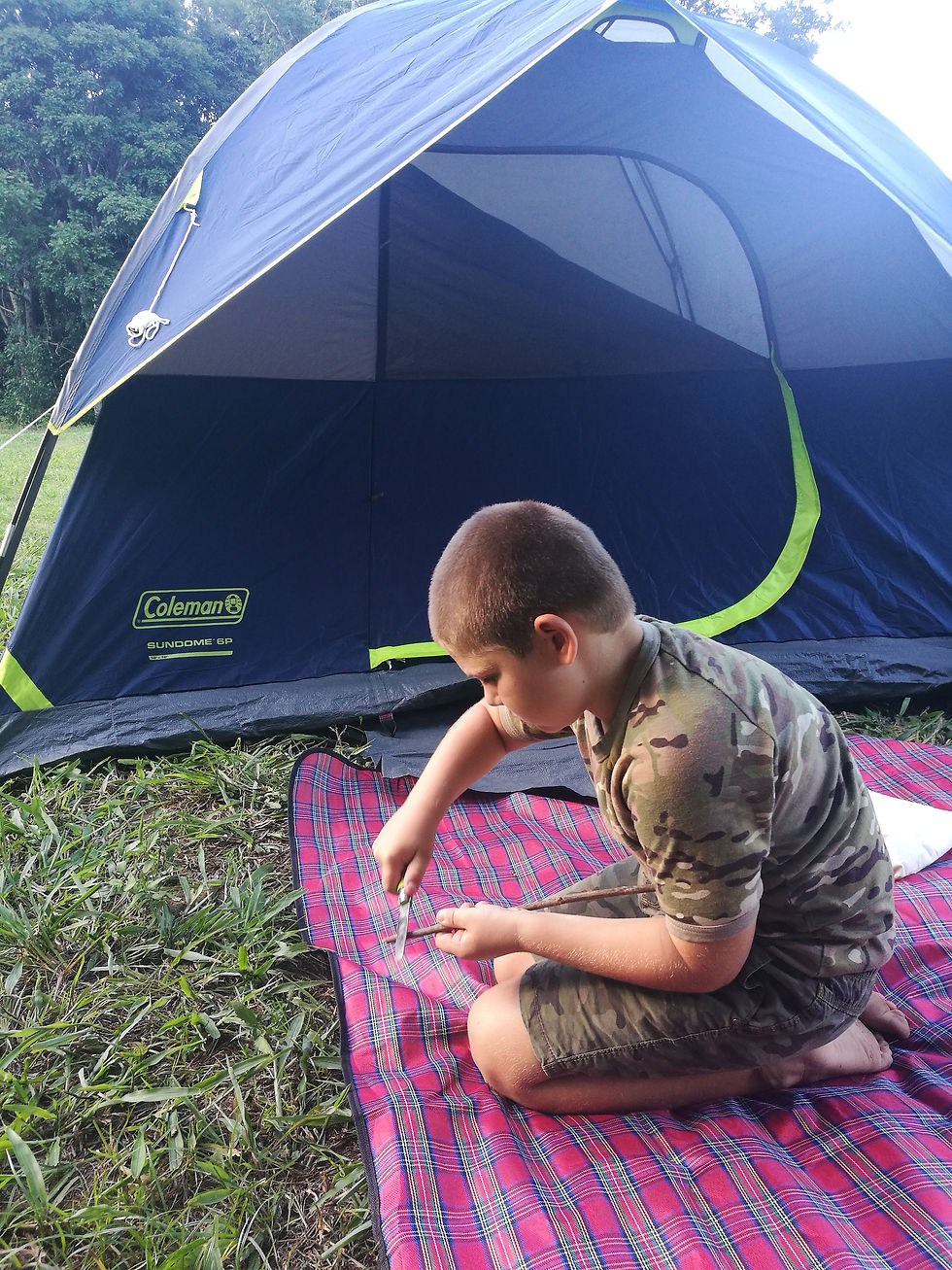Tree Climbing: A Sensory Adventure for Neurodivergent Kids
- Autism & Beyond

- May 3, 2024
- 3 min read
Updated: Jun 21, 2024
I remember when I was younger our back yard had a massive mango tree growing in it, this thing was absolutely huge! My brother and I used to spend a whole lot of time climbing around it; him climbing higher than I ever did. We even built our very own tree house in it.
Tree climbing is a classic childhood activity, but for some neurotypical children as well as neurodivergent children, it can offer many challenges to overcome. A blog for another time perhaps!
This blog talks about the unique set of benefits beyond just the thrill of reaching new heights and why every child (and adult) should experience some level of tree climbing.
Sensory Integration: Climbing provides a variety of sensory experiences – the texture of the bark, the sway of the branches, the wind in their hair. This variety of input can be calming and help children with ASD integrate their senses, leading to better overall sensory processing.
Motor Skill Development: Climbing strengthens muscles and improves gross motor skills. Navigating branches, pulling themselves up, and maintaining balance gives them a full-body workout, which can be especially beneficial for children who might struggle with aspects of physical development.
Spatial Awareness Boost: Climbing challenges children to think spatially. They need to judge distances, plan their movements, and coordinate their limbs. This can improve spatial awareness and body mapping, which are important skills for everyday life.
Confidence Builder: Successfully navigating a tree and reaching the top can be a huge confidence booster. For children with ASD who might struggle with social interactions or self-doubt, this sense of accomplishment can be particularly rewarding.
Quiet Escape: Perched high in a tree, a child can create their own quiet haven. This can be a welcome escape from overwhelming noises or crowds, offering a space for relaxation and focus.
Safety First! Of course, tree climbing should always be done with adult supervision and appropriate safety measures in place. It's important to choose sturdy trees and climb within safe limits.
For some tips on how to start learning to climb trees, including key safety points, feel free to watch some of my short videos on the topic HERE
Some of the videos in that list are fun but some are tutorials 😊
Climbing for Growth: Tree climbing isn't just about fun; it's about fostering development and well-being in children on the spectrum.
So, next time you're at the park, encourage your child to explore the climbing opportunities and discover the world from a whole new perspective!
If your child is a tree climber we would love for you to share some photos of their tree climbing adventures.
Cheers,
Clint
Confidence Coach
Disclaimer:
This disclaimer governs your use of Autism & Beyond website and blog. By using this website, you accept this disclaimer in full. If you disagree with any part of this disclaimer, do not use this blog, this website or any affiliated websites, properties, or companies. We reserve the right to modify these terms at any time. You should therefore check back periodically for changes. By using this website after we post any changes, you agree to accept those changes, whether or not you have reviewed them.
All information and resources found here are based on the opinions of the author unless otherwise noted. All information is intended to motivate readers to make their own nutrition and health decisions after consulting with their health care provider. I am not a doctor, lawyer, psychiatrist, therapist, or your mother, and I don’t play one on the internet.
The author of this site encourages you to consult a doctor before making any health changes, especially any changes related to a specific diagnosis or condition. No information on this site should be relied upon to determine diet, make a medical diagnosis, or determine treatment for a medical condition. The information on this website is not intended to replace a one-on-one relationship with a qualified health care professional and is not intended as medical advice.
NO information on this site should be used to diagnose, treat, prevent or cure any disease or condition.
None of the posts and articles by Autism & Beyond may be re-printed without express written permission of the author. Autism & Beyond will respond to written requests to re-print parts of posts and excerpts/quotes (10% or less) may be reprinted with attribution as long as all links are left intact.












Comments